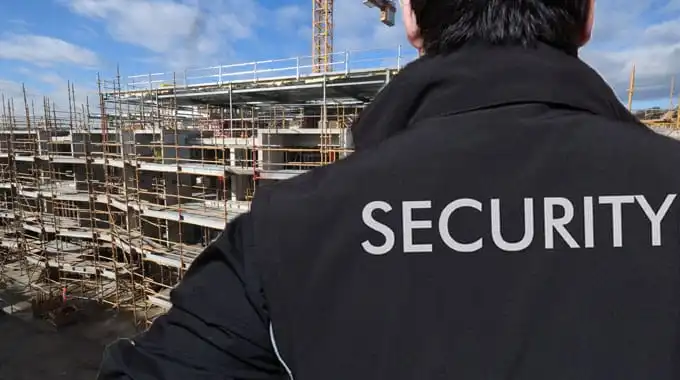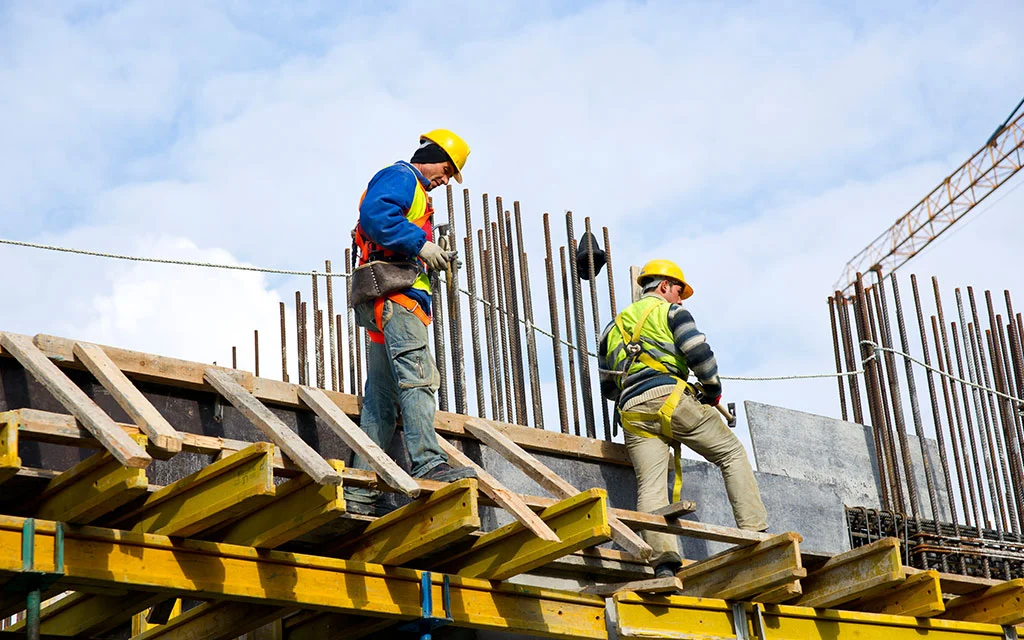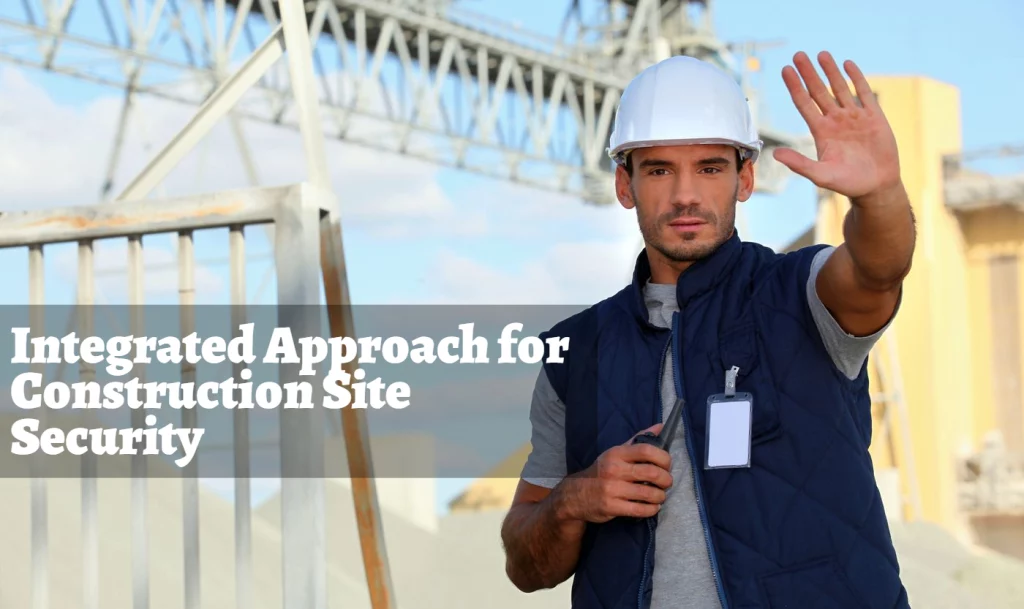The increasing population and people looking for more convenient ways of earning in a metropolitan city have increased the construction requirements. More people are shifting from rural areas to cities for better life opportunities; thus increasing the demand for construction buildings. In Edmonton, in the past few years, the construction site has increased to 20% for residential and commercial buildings. Commercial and residential construction site security has elevated demands for managing the operations at the sites. CPS is among the top construction site security companies that offer a more integrated approach to construction site security.
The construction site security deals with copper, machinery, tools, batteries, fuel, and even work vehicles. The construction site security guards have clearly taken away lessons from these incidents and use tactics that are both well-practiced and bold. In addition to fencing, bright lighting, CCTV coverage, and security patrols in remote areas, a more integrated approach is required to address the new challenges of construction site security.
What is Integrated Security?
In today’s era, businesses and organizations face numerous security intimidations, ranging from cyber-attacks to physical breaches. Consequently, many organizations have turned to integrated security solutions to help guard their assets and mitigate risks. Construction security is one of those that needs to stop these outbreaks is the right mix of multiple security measures.
Integrated security is a complete approach to security that combines different Construction Security Services and technologies to create a more operational and cohesive security strategy. As an alternative to relying on one type of construction site’s security measure, such as surveillance cameras, patrolling, or access control systems, integrated security solutions pool multiple systems to create a more complete and layered approach to security. Moreover, integrated security arrangements can include a variety of different technologies and trials, such as video surveillance, access control systems, intrusion detection, fire alarms, and even cybersecurity elucidations.
These different integrated security systems work together seamlessly to provide a complete image of a construction site’s security posture.
- A major benefit of integrated security is that it can support construction sites identify potential security threats before they become a concern. By combining diverse security measures, organizations can create a more tough security system that is better fortified to detect and respond to security intimidations. For instance, if an access control system detects an unofficial entry attempt, the system can automatically activate an alarm and notify security personnel to inspect further.
- Integrated security helps in streamlining security operations.Instead of achieving multiple security systems independently, you can manage an integrated security system from a single interface. This can support reduce complexity, improve efficiency, and decrease the risk of human error.
- Integrated security can also offer construction sites greater visibility into their security stance. By combining different security measures, organizations can gain a more complete picture of their security environment, including potential vulnerabilities and areas that may need additional protection.
How is Integrated Security Executed on a Construction Site?
Integrated security for construction security can be executed on a construction site by following a few key steps:

1. Conduct a Risk Assessment
The first step in applying integrated security is to conduct a risk assessment. This comprises of identifying potential security intimidations, such as vandalism, theft, and unauthorized access, and assessing the likelihood and effect of these threats. Based on the results of the risk assessment, the team can develop a complete security plan.
2. Develop an Inclusive Security Plan
An inclusive security plan should include a range of physical security trials, such as surveillance cameras, access control systems, and alarm systems, in addition to cybersecurity trials, such as antivirus software, firewalls, and encryption. The security plan should also include procedures and policies for responding to security events, such as emergency response plans and event reporting protocols.
3. Apply Security Technologies
The next step is to apply the necessary security technologies once the team establishes the security plan. This may include connecting access control systems, surveillance cameras, and alarm systems. Along with applying cybersecurity trials, such as firewalls and encryption.
4. Train Construction site security guards
You must ensure that all guards on the construction site are trained on the security plan. And how to respond to security occurrences. This may involve giving training on physical and cybersecurity best practices, such as how to recognize phishing emails and how to create strong passwords.
5. Monitor and Evaluate
Lastly, it’s important to constantly monitor and evaluate the efficiency of the integrated security plan. This may involve directing regular security audits and assessments. Moreover, reviewing incident reports to identify areas for improvement.
Components of the Integrated Construction Site Security
Construction sites are a prime goal for theft, vandalism, and other security intimidations. An integrated approach involves merging physical and technological measures, procedures, and practices to create a comprehensive security system.
Physical Measures: Physical measures are crucial components of an integrated approach to construction security. These measures include Event Security Guard Services and measures like:
- Perimeter Security: A secure perimeter is the first line of protection against unauthorized access to a construction site.You can attain this by installing barriers, fencing, and gates around the site.
- Access Control: Access control systems regulate the movement of people and automobiles in and out of the construction site .Construction site security companies apply access control measures. Like the use of construction site security guards, access control cards, biometric scanners, or other parallel systems.
- Lighting: Suitable lighting is vital for deterring criminals from entering the construction site. Brightened areas make it easier for construction site security guards to detect any suspicious activity.
- Surveillance: Video surveillance cameras are an essential tool for monitoring construction security. You should place cameras tactically to capture all areas of the site. And monitor and keep the recordings for future reference.
- Alarms: Alarms are an operative way of alerting construction security guards and the authorities in case of an interruption or security breach. You can fit alarms at various points throughout the construction site, such as windows, doors, and access points.

Technological Measures: Technological trials are also vital components of an integrated approach to construction security. These actions include:
- GPS Tracking: These systems can be used to trail the location of equipment and vehicles. Which can assist deter theft and support in recovery in case of theft.
- Remote Monitoring: Construction security companies allow construction security guards to monitor the construction site remotely. Through the use of video surveillance cameras and other sensors.
- Biometric Authentication: These systems can confirm the identity of workers and others accessing the construction site.
- Mobile Apps: Mobile apps can help communicate security information to workers and other personnel.
- Let me know if you need further adjustments!As well as to report security events and emergencies.
Procedures and Protocols: Procedures and protocols are vital components of an integrated approach to construction security including:
- Employee Training: Employees should be qualified in security procedures and protocols, comprising how to identify and report apprehensive activity.
- Emergency Response Plan: An emergency response strategy should be in place, delineating procedures for responding to security events and emergencies.
- Contractor and Vendor Management: Contractors and vendors should be required to follow security measures and protocols. When working on the construction site.
Central Protection Services is among the future-focused construction site security companies. And we believe to perform better for the interface between people and technology for their particular security needs. Prominently, we are developing some innovative platforms for more futuristic security challenges. Central Protection Services is a Canadian-based Security Company Edmonton offering services for the new world’s challenges. Our offices are in Edmonton, Calgary, Alberta Wide, Airdire, and allied regions. We offer technological systems and construction site security guards for construction sectors.






